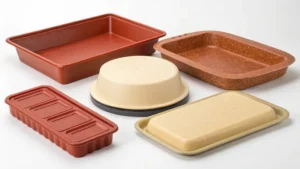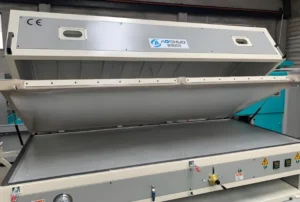
Plastic extrusion is evolving under the influence of recycling and the circular economy1, pushing the industry towards using more recycled materials, reducing waste, and designing for sustainability.
The plastic extrusion process, which melts and shapes plastics into continuous profiles like pipes and sheets, is undergoing a transformation due to the rise of recycling and the circular economy. Driven by environmental regulations and consumer demand, companies are integrating recycled plastics into their extrusion workflows, adapting designs for recyclability, and adopting technologies to enhance material quality. This article explores how these forces are reshaping plastic extrusion, covering materials, processes, factors, applications, and comparisons with other technologies.
Recycling and the circular economy are making plastic extrusion more sustainable.True
By using recycled materials and designing for end-of-life recyclability, the industry reduces its environmental impact.
Recycled plastics are always of lower quality than virgin plastics.False
Advanced sorting and processing can produce high-quality recycled plastics suitable for various applications.
- 1. What is Plastic Extrusion and How is it Being Influenced by Recycling?
- 2. What are the Common Recycled Materials Used in Plastic Extrusion?
- 3. What are the Steps in the Plastic Extrusion Process with Recycled Materials?
- 4. What are the Key Factors Influencing Plastic Extrusion with Recycled Materials?
- 5. What are the Applications of Plastic Extrusion with Recycled Materials?
- 6. How Does Plastic Extrusion with Recycled Materials Compare to Other Technologies?
- 7. Conclusion
What is Plastic Extrusion and How is it Being Influenced by Recycling?
Plastic extrusion is a high-volume manufacturing process where thermoplastic materials are melted and shaped into continuous profiles such as pipes, sheets, and tubes. It’s valued for its efficiency and versatility across industries like construction and packaging. Today, recycling and the circular economy are driving significant changes in this process.

The circular economy seeks to minimize waste and maximize resource efficiency by keeping materials in use for as long as possible. For plastics, this involves reducing consumption, designing for reuse and recycling, and prioritizing recycled or bio-based materials. Recycling transforms plastic waste into new products, cutting reliance on virgin resources.
This shift impacts plastic extrusion in key ways:
-
Increased Use of Recycled Plastics: Materials like recycled polyethylene (rPE) and polypropylene (rPP) are now common in extrusion.
-
Sustainable Design: Products are engineered for easier recycling, often using single-material compositions.
-
Technological Advances: Innovations improve the quality and usability of recycled plastics.
Challenges such as material contamination, quality variability, and economic scalability persist, but the push for sustainability is undeniable.
The circular economy is a passing trend with little impact on plastic extrusion.False
It’s a systemic shift driven by regulations and market demands, fundamentally altering industry practices.
Using recycled plastics in extrusion reduces costs.True
Recycled plastics are often cheaper than virgin materials, offering savings in large-scale production.
What are the Common Recycled Materials Used in Plastic Extrusion?
Recycled plastics are increasingly vital in extrusion, providing sustainable alternatives to virgin thermoplastics like polyethylene (PE) and polyvinyl chloride (PVC). Here are the most common ones:

Recycled Polyethylene (rPE)2, Recycled Polypropylene (rPP), Recycled Polyethylene Terephthalate (rPET), and Recycled Polystyrene (rPS) are widely used in plastic extrusion for their availability and eco-friendly benefits.
| Material | Source | Applications | Properties | Challenges |
|---|---|---|---|---|
| rPE | Post-consumer packaging | Pipes, films, sheets | Good mechanical properties | Contamination, odor |
| rPP | Automotive parts, packaging | Construction materials, films | High strength, durability | Color variation, MFI inconsistency |
| rPET | Beverage bottles | Fibers, sheets | Excellent clarity, barrier | Moisture sensitivity, degradation |
| rPS | Packaging, construction waste | Insulation boards, packaging | Good thermal insulation | Brittleness, limited recyclability |
-
rPE: Sourced from packaging waste, it’s versatile but may need additives to mitigate contamination.
-
rPP: Recycled from automotive and packaging sectors, it’s durable but varies in color and melt flow.
-
rPET: Known for clarity, it’s used in fibers and sheets despite sensitivity to moisture.
-
rPS: Offers insulation but is brittle, limiting its applications.
These materials balance environmental benefits with challenges like quality control, requiring advanced processing to meet performance standards.
Recycled plastics can fully replace virgin plastics in extrusion.False
Quality variations limit their use in some high-performance applications.
Recycled plastics lower the carbon footprint in extrusion.True
They require less energy to produce than virgin plastics, reducing emissions.
What are the Steps in the Plastic Extrusion Process with Recycled Materials?
Extruding recycled plastics involves additional steps compared to virgin materials, reflecting the circular economy’s focus on resource recovery.

The process includes collection, sorting, cleaning, grinding, blending, melting, shaping, cooling, and post-processing, tailored to ensure quality with recycled inputs.
-
Collection and Sorting: Plastic waste is gathered and sorted by type (e.g., PE, PP) for compatibility.
-
Cleaning and Preprocessing: Waste is washed and dried to remove impurities.
-
Grinding or Shredding: Plastics are shredded into flakes or pellets for uniformity.
-
Blending: Recycled plastics may be mixed with virgin materials or additives to enhance properties.
-
Feeding: Material enters the extruder’s hopper via automated systems.
-
Melting and Mixing: A screw melts and mixes the plastic; twin-screw extruders excel with recycled materials.
-
Shaping: Molten plastic is forced through a die into profiles like pipes or sheets.
-
Cooling and Solidifying: The product is cooled to set its shape.
-
Post-Processing: Cutting or trimming finalizes the product.
These steps address the variability of recycled plastics, ensuring usability in extrusion.
Extruding recycled plastics requires no extra steps.False
Sorting and cleaning add complexity compared to virgin plastics.
Twin-screw extruders are ideal for recycled plastics.True
They offer superior mixing and degassing for variable materials.
What are the Key Factors Influencing Plastic Extrusion with Recycled Materials?
Success in extruding recycled plastics hinges on controlling several critical factors.

Material purity, melt flow index (MFI), temperature control, additives, and screw design determine the quality and performance of extruded products from recycled plastics.
-
Material Purity3: Contamination affects properties; near-infrared spectroscopyenhances sorting.
-
Melt Flow Index (MFI)4: Varying MFI from degradation requires consistency for uniform extrusion.
-
Temperature Control: Precise settings prevent degradation of sensitive recycled plastics.
-
Additives5: Compatibilizers and stabilizers improve performance.
-
Screw Design: Optimized screws ensure effective melting and mixing.
These factors demand meticulous management to achieve high-quality outputs.
Purity is less critical with recycled plastics.False
Impurities significantly affect product quality.
Additives enhance recycled plastics in extrusion.True
They improve compatibility and mechanical properties.
What are the Applications of Plastic Extrusion with Recycled Materials?
Recycled plastics in extrusion serve diverse industries, aligning with circular economy goals.

Construction, packaging, automotive, and agriculture benefit from extruded recycled plastics for sustainability and cost savings.
-
Construction: Pipes, window frames, and insulation boards reduce virgin material use.
-
Packaging: Films and sheets address waste and consumer sustainability demands.
-
Automotive: Trims and components enhance vehicle sustainability.
-
Agriculture: Irrigation pipes and greenhouse films lower environmental impact.
These applications highlight the adaptability of recycled plastics, though performance requires tailored processing.
Recycled plastics are limited to low-end applications.False
Proper processing enables use in high-performance sectors like automotive.
Extrusion with recycled plastics aids sustainability goals.True
It reduces environmental impact and meets regulatory demands.
How Does Plastic Extrusion with Recycled Materials Compare to Other Technologies?
Extrusion is a leading method for recycled plastics, but other technologies offer distinct advantages.

Extrusion competes with injection molding, 3D printing, and blow molding, each suited to specific recycled plastic applications.
-
Injection Molding: Produces precise parts for automotive and consumer goods but needs tighter material control.
-
3D Printing: Offers customization with recycled plastics, though limited in scale.
-
Blow Molding: Creates hollow items like bottles, facing consistency challenges with recycled materials.
The choice depends on application needs and material properties.
Extrusion is the only method for recycled plastics.False
Injection molding and 3D printing are also effective.
3D printing excels in customization with recycled plastics.True
It reduces waste and allows tailored designs.
Conclusion
Recycling and the circular economy are revolutionizing plastic extrusion, promoting recycled materials, sustainable design, and innovative processes. Despite challenges like material quality and cost, the benefits—reduced waste, lower emissions, and resource efficiency—are transformative. Embracing these changes is vital for the industry’s future competitiveness and sustainability.
-
Understanding the circular economy is crucial for grasping how it influences sustainability in plastic production and recycling. ↩
-
Exploring rPE's advantages and challenges can provide insights into its role in sustainable manufacturing practices. ↩
-
Understanding material purity is crucial for ensuring high-quality outputs in recycled plastics, making this resource invaluable for industry professionals. ↩
-
Exploring MFI's impact on extrusion can help optimize processes and improve product quality, essential for manufacturers. ↩
-
Additives are key to improving the performance of recycled plastics; this resource will provide insights into their effective use. ↩








